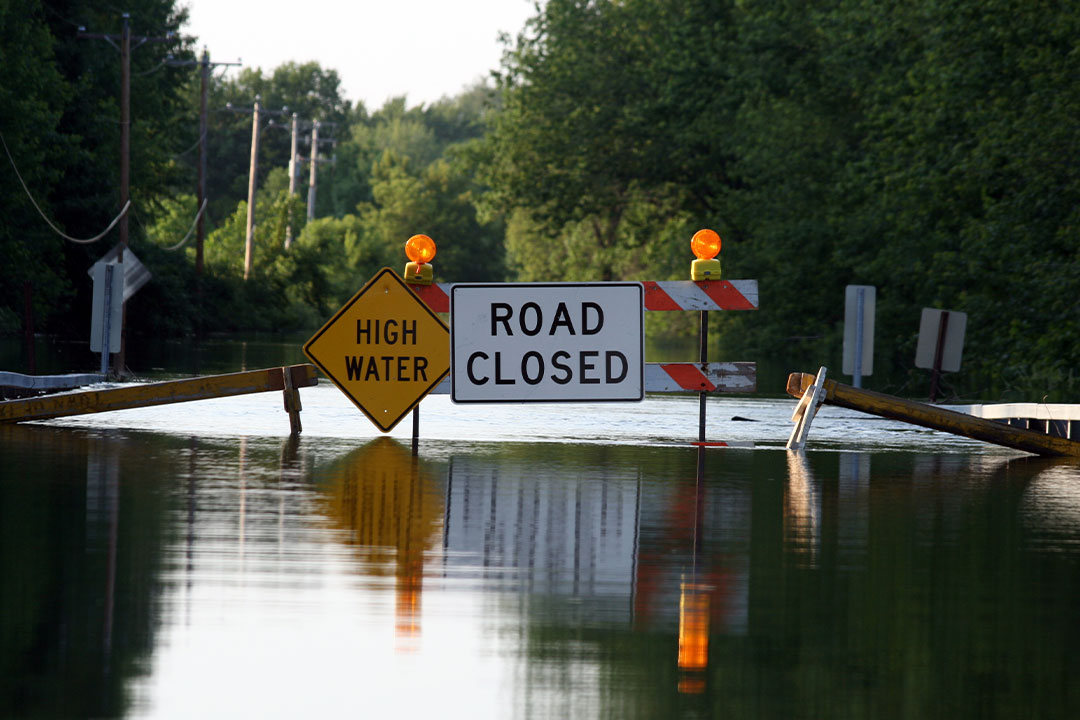St. Louis is home to many major rivers, including the large confluence of the Missouri and Mississippi Rivers. Our proximity to these large bodies of water also increase our region’s risk for flash flooding and other major floods, especially within the last 10 years. As a city with many rivers, we wanted to provide awareness of our high risk flood areas and additional flash flooding safety ahead of our rainiest months of the year.
Understanding Flood Zones
Flash floods can happen any time there is a heavy onslaught of rain near a small or large body of water. In Missouri, we have faced serious seasonal and flash flooding in the last decade including the Great Flood of 1993, the Meramec River flooding of 2015 and the flash flood event of 2022. Many of these extreme flooding events occurred in areas that are notorious flood zones, leading to drivers getting caught on the roads while driving cars in water.
Flood zones are geographical areas delineated by the Federal Emergency Management Agency (FEMA) for their risks of flooding. Each zone is categorized from most at risk for flooding (Zone AE) to low risk (Zone X). St. Louis hosts a wide range of flood risk zones due to its major rivers such as the Mississippi River to its smaller creeks such as Mattese Creek, River Des Peres and Deer Creek in St. Louis County and the City of St. Louis.
Whether you are at home or out on the roads, pay attention to flood alerts, understand what to do for flash flooding safety and know your zone by viewing our local flood zone map.
High Risk Flooding Areas in St. Louis City & County
Over the past 10 years, these driving areas have experienced higher flooding risks. These highways, roads and streets include, but are not limited to:
- The Intersection of Highway 141 and Interstate 44. During the 2015 flood, the lower areas of the roads were inaccessible due to being located on a Meramec River floodway. The redesign of the intersection ramps has helped alleviate the potential for flooded roadways, but it is important to still be cautious if heavy rains produce flash flooding in this area.
- North and South Broadway. This major St. Louis roadway is banked near the Mississippi River. During flash flooding and seasonal floods, this area often experiences higher risk from the confluence of the Missouri and Mississippi Rivers all the way down to Jefferson Barracks.
- Interstate 55 South into Arnold. This area is another large floodway of the Meramec River and it spans both St. Louis County and Jefferson County.
- The City of Fenton, Missouri. This city is known for its beautiful parks, but it also lies on a large floodway for the Meramec River. Its city center located just east of Highway 141 often faces flash floods.
- Highway 370 & Page Avenue. This area is on the banks of the Missouri River before it meets the Mississippi River. This area does not have many homes, but those commuting across Highway 370 or Page Avenue into St. Charles County may need to be prepared to act and use flash flooding safety measures to get home safely.
- Maplewood, Brentwood and Warson Woods. Deer Creek is a stream off the River Des Peres that often floods when rain falls rapidly in the area. The creek often floods at the intersection of Manchester Rd. and S. Hanley Rd., along S. Mcknight Rd. and along Litzsinger Rd. near Old Warson Country Club.
- River Des Peres Drainage Canal. Situated in South St. Louis City and County, the River Des Peres can flood onto roads that wind around its path. These areas include Weber Rd, Germania St., River City Blvd., River Des Peres Blvd. and more.
- Gravois Creek. Spanning areas such as Grant’s Farm and the Affton, Green Park and Bella Vista neighborhoods, Gravois Creek is a smaller high risk flood zone, but can impact major roads such as Gravois Rd., Union Rd, and Reavis Barracks Rd.
Essential St. Louis Flash Flood Safety Tips
In the event of a flash flood occurring in an area where you frequently drive, we encourage you to keep in mind these flash flood safety tips.
- Pay attention to flash flood alerts. Listen to your radio, adhere to national alerts via your cell phone or take note of local weather advisories if you have to travel in a flood zone area.
- Avoid Floodways. If you know you are going to need to cross a floodway such as some of the areas listed above, plan accordingly before driving and remember to never force yourself to drive your car in water.
- Turn Around. If areas are barricaded by law enforcement, they are there for a reason regardless if water is present or not. Do not go past barriers or attempt to drive through water that seems shallow. We advise you to turn around rather than drive through water.
- Evacuate Immediately. If you are caught in rising water while driving, evacuate your car immediately rather than attempting to drive your car in water.
Stay Safe with MHM’s Flash Flood Safety Tips this Season
Flash floods are often unexpected and extremely unpredictable. As we go into this year’s season of increased risk for flooding, we hope you will keep in mind these flooding zones and prepare with these flash flood safety tips if you get stuck while driving.
For more safety tips and legal information, please visit our blog to learn more from our personal injury and car accident attorneys at MHM.
